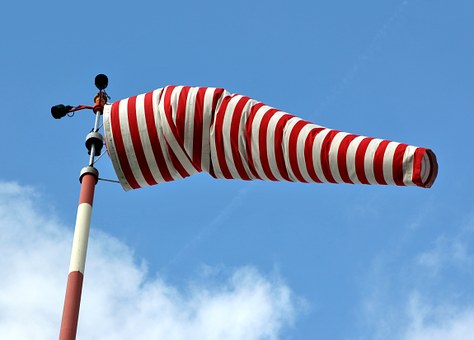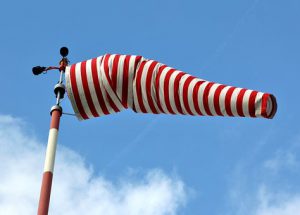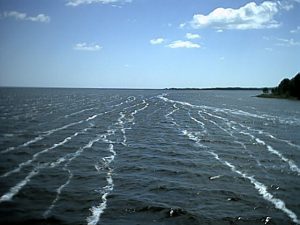


See The Wind. Perhaps the most important skill that separates the best sailors from the rest of the fleet is their ability to see the wind.
The reason that this is critical is that it enables them to consistently get to the windier side of the course and thus sail faster than their competition.
Obviously, no one can actually see the wind but there are a number of ways to indirectly see what the wind is doing, particularly what it’s doing farther up the course.
Tricks To See The Wind
Flags, smoke or other sailboats in your course area are great indicators but in many cases, these are not available so the most consistent way to see the wind is by observing how it effects the water.
The higher up we are the easier it is to see the effect on the water but most of us do not have the luxury of height above the water. In light air, standing up in your boat and looking to windward will give you a better picture and in a larger boat there is the ability to get winched up the mast to look further afield to see what is happening.
Contrasting colours caused by ripples in the water indicate the presence of a puff. With practice and observation, you will get better at predicting strength and direction.
As part of a drill and a way to hone your skills, sail upwind and try to spot puffs. Don’t worry about tacking for puffs. When you see a puff, try to predict how many seconds it will be before you sail into it. Then start counting down the seconds.
By practicing and getting better at this you’ll also develop the ability to discern how strong a particular puff will be. This is valuable information because it allows you to anticipate the effect and trim accordingly. Sailing into more wind can greatly increase your boat’s speed.
Looking Up The Course
Looking up the course should tell you which side of the course is favoured. Don’t discount other variables such as current or wind shifts. Remember that the goal is to spend as much time as possible in the puffs.
An important consideration is to not sail for a puff that is too far away. In most cases, it will have dissipated before you get to it.
I have spoken up to now about looking up the course. Downwind puffs are even more important because they will be with you longer.
If you are in a crewed boat, one team member should be allocated the task of looking for puffs. They should also be responsible for communicating to the team regarding wind on the course.
Their observations should be constantly updated on what puffs are doing, where they are coming from, their strength and what effect they are likely to have on the boat.

